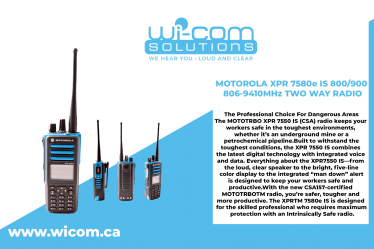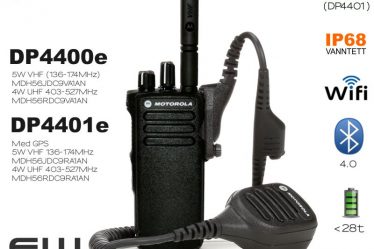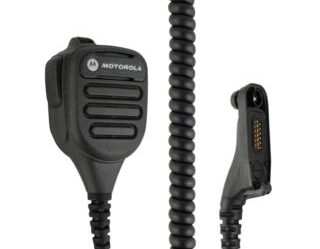Portable Two-Way Radio
Known as two-way radios or walkie talkies, these handheld portable devices offer durability, functionality and efficiency when communication may quite literally be a matter of life or death. Unlike smartphones, radios have long-lasting battery life and specialist features that allow for effective communication in any environment.
Licensed two-way radios are typically the preferred choice for businesses with multiple sites, such as schools and universities. Despite their rugged and durable construction, walkie talkies still require care and attention to prolong their lifespan.
Features
The two-way radio is a communication device that operates on radio waves. It consists of a transmitter and receiver, and a microphone. It also has a push-to-talk button, a display screen, and an antenna. Its battery-powered design allows users to communicate with one another over a wide range of frequencies.
There are many different types of portable two-way radios available on the market, but most offer similar features. Some feature a power boost button that can increase the radio’s signal strength. Others can automatically shut down after a period of inactivity, saving battery life. You can Portable Two-way Radio also find models that have an inversion voice scrambler and a built-in flashlight.
Some models are also designed to be used in marine conditions. These radios may be MIL-STD certified, and they can withstand dust, humidity, sand, and mud. They can also float on water and survive submersion in up to five feet of water for up to 30 minutes.
Some two-way radios require a license, which gives you exclusive use of a particular frequency over an entire region or county. These devices are typically more expensive than handhelds, but they are the best option if you want to ensure reliable and secure communications. These devices are easy to pair and include features such as multiple channels, privacy codes, and a clear display. They also provide a programmable interface for custom frequencies.
Design
Two-way radios can be extremely compact and lightweight, meaning they can be used in a variety of situations. Whether you need them for an outdoor adventure or work in a noisy office, they can provide a crystal clear line of communication. The radios are designed to be durable, and they can also come with specialist features for use in specific conditions.
Some radios have a text messaging function, which allows users to transmit information that is not easily captured via audio messages. This can include locations, serial numbers and phone numbers. Radios are also often designed with emergency alert functionality, which allows a user to quickly send out an alert in case of an accident or other incident.
If you need a two-way radio that can work over long distances, look for one with a wide frequency range. The radios can be programmed to operate on different frequencies, which can prevent interference from other devices. You can also find models that offer full duplex communication, which allows you to talk and listen simultaneously.
If you’re looking for a radio that will help you stay safe at work, consider getting a model with a man-down feature. This will detect when someone has not moved for a period of time, which could be an indication that they have fallen or been injured.
Battery Life
One of the main things that affects radio battery life is how it’s used and cared for. A battery that’s not looked after properly will degrade faster than it should, which means it won’t last as long as possible. This can have repercussions on staff productivity, and it can also make teams more vulnerable in the event of an emergency.
Two-way radios and walkie-talkies are handheld devices that can be used to communicate with other workers in a team. They have many functions, including the ability to broadcast on multiple channels, a display screen, and an encryption function to protect against unauthorized listening. Most two-way radios come with rechargeable batteries, which have a standard life of about 18-24 months. To extend their lifespan, they should be charged at least once every day and stored in a cool, dry place.
Some of the best models on the market are made by companies such as Kenwood and Motorola. These devices are designed to perform well in a range of environments and can handle a large amount of communication data. They also have a comfortable handgrip and easy-to-use controls.
One of the most important steps in extending radio battery life is educating all employees on how to charge their devices. It’s common practice to put a device back on the charger at the end of a shift, but this habit will shorten the battery’s life. Instead, users should always check the batteries before charging them.
Cost
A two-way radio can be a great tool for businesses which operate in environments where mobile phone signals are limited or simply not available. This includes industries such as shipping, mining and aviation. It is also a great option for those who work outside of the remit of mobile phone networks such as offshore workers.
The cost of a two-way radio will vary depending on the specific model and its features. Some models have a very low cost, while others are more expensive and designed for professional use. Most digital two-way radios offer a range of customisable communication features. Many include features such as voice-activated transmission, privacy codes, easy pairing, a settings lock and ring tones. Some also have NOAA weather and hazard alerts.
Other radios will include P25 capabilities, which are important for public safety. This means that two radios can communicate Portable Two-way Radio with each other even when they are operating at different power levels, allowing them to share information without interfering with each other.
Many of these radios will require an encryption key to operate, which is necessary for legal purposes. It will help prevent unwanted listeners from tuning in and hearing conversations that they shouldn’t. It will also help protect the integrity of sensitive and confidential information. Other accessories that may be required for a two-way radio will vary from one manufacturer to another. These can include radio batteries, antennas, headsets and chargers.


